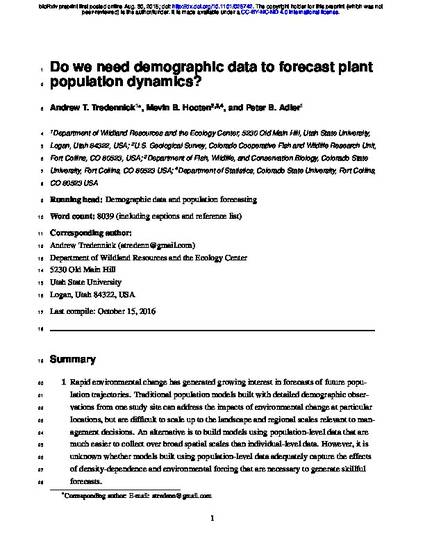
Article
Do we need demographic data to forecast plant population dynamics?
bioRXiv
(2016)
Abstract
1. Rapid environmental change has generated growing interest in forecasts of future population trajectories. Traditional population models built with detailed demographic observations from one study site can address the impacts of environmental change at particular locations, but are difficult to scale up to the landscape and regional scales relevant to management decisions. An alternative is to build models using population-level data that are much easier to collect over broad spatial scales than individual-level data. However, it is unknown whether models built using population-level data adequately capture the effects of density-dependence and environmental forcing that are necessary to generate skillful forecasts. 2. Here, we test the consequences of aggregating individual responses when forecasting the population states (percent cover) and trajectories of four perennial grass species in a semi-arid grassland in Montana, USA. We parameterized two population models for each species, one based on individual-level data (survival, growth and recruitment) and one on population-level data (percent cover), and compared their forecasting accuracy and forecast horizons with and without the inclusion of climate covariates.
Disciplines
Publication Date
2016
DOI
doi: https://doi.org/10.1101/025742
Citation Information
Peter B. Adler. "Do we need demographic data to forecast plant population dynamics?" bioRXiv Iss. October 17 (2016) Available at: http://works.bepress.com/peter_adler/110/
